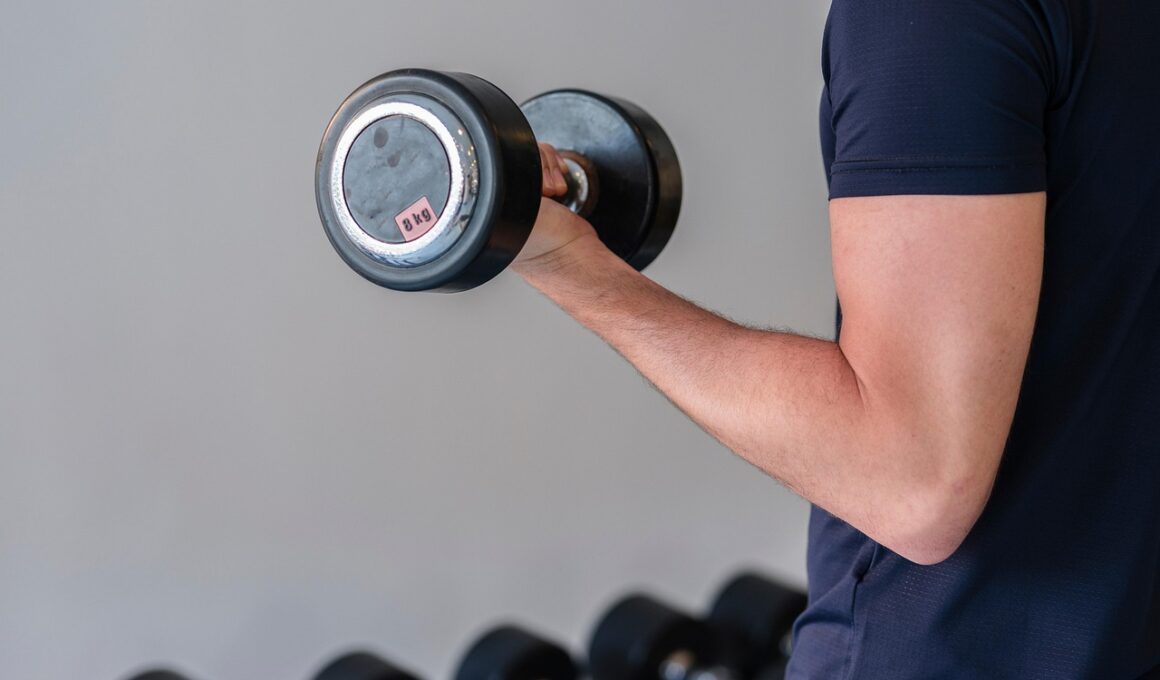Evidence-Based Muscle Activation Protocols
Muscle Activation Techniques (MAT) are a comprehensive approach designed to rehabilitate and enhance muscle function. By providing targeted activation for specific muscle groups, MAT can address neurological dysfunctions that often lead to muscle weakness or injury. The technique focuses on improving the communication between the brain and the muscles, which is essential for optimal movement. It aids in resolving issues where the central nervous system fails to activate muscles properly during activities or exercises. Individuals experiencing chronic pain, impaired mobility, or post-injury recovery stand to benefit immensely from these innovative protocols. Through systematic assessments, practitioners can tailor exercises specifically designed to activate underperforming muscles. This targeted approach ensures that training is efficient and effective, yielding better outcomes. Moreover, studies have shown that incorporating MAT not only enhances muscle strength but also promotes recovery and better overall performance. Research illustrates that personalized activation protocols enhance neuromuscular efficiency, resulting in effective learning and mastering of motor skills. Cultivating a heightened awareness of one’s body can significantly improve rehabilitation outcomes, enhancing both athletic performance and daily function.
Understanding Muscle Activation
Muscle activation involves selectively recruiting specific muscles to enhance strength, functionality, and prevent injury. In rehabilitation, understanding the underlying mechanisms of how muscles engage is crucial. Activation techniques aim to stimulate the muscles that are often neglected or not firing adequately. Regular exercise routines may fail to activate these essential muscle groups, leading to compensatory movements that can cause injuries. Establishing a solid mind-muscle connection allows for better awareness and control of movements. This awareness enhances the body’s ability to activate underutilized muscles effectively. By employing specialized exercises targeting deep stabilizing muscles, practitioners can facilitate optimal joint function and mitigate pain. In many cases, patients who do not respond to traditional rehabilitation methods find success with MAT, restoring normal muscle activation patterns. This revolutionary approach emphasizes not just healing but also strengthening pathways that improve overall movement efficiency. Furthermore, muscle activation techniques can be integrated into various fitness regimens, ensuring a comprehensive plan for those wishing to enhance their performance. Ultimately, proper activation leads to improved strength outcomes and a reduced risk of re-injury.
Research suggests that specific activation protocols can yield significant benefits during rehabilitation from injuries. Pursuing these techniques means focusing on systematic assessments that pinpoint which muscles require activation to restore function. By systematically activating weakened muscles, individuals can effectively enhance their physical capacities and range of motion. Considered an evidence-based practice, techniques are grounded in neurology and biomechanics principles, fostering rehabilitation through improved muscle response. Evidence supports that patients who undergo consistent muscle activation exercises may experience a quicker return to sport-specific activities. Additionally, MAT has broader applications beyond rehabilitation, as it can be valuable in enhancing athletic performance. Athletes may further develop their neuromuscular coordination, power, and functional fitness by integrating MAT into their training regimen. Furthermore, the techniques can be modified for specific sports, allowing athletes to target the biomechanical requirements unique to their disciplines. This personalization ensures an effective training protocol that aligns with their goals, preventing musculoskeletal injuries over time. As athletes increasingly seek to improve performance and longevity, muscle activation protocols are gaining recognition as key components within fitness and rehabilitation.
Implementing Muscle Activation Techniques
To implement muscle activation techniques effectively, professionals must adhere to a systematic approach. First, a thorough assessment of muscle function and range of motion is critical to identify underactive muscles. Assessments may include physical evaluations, muscle testing, and functional movement screenings. After identifying muscles that require attention, practitioners can develop tailored activation exercises, incorporating resistance and varying intensities to ensure efficacy. Activation drills emphasize quality over quantity, integrating both isotonic and isometric strategies to effectively engage the target muscles. Moreover, the exercises should be progressively challenging, allowing for continual growth and adaptability. Proper execution is essential; therefore, adherence to correct techniques during the activation exercises cannot be overlooked. Clients should receive clear instruction and cues to enhance their neuromuscular control during practice. Tracking progress through periodic reassessments ensures that adaptations are being made and that muscle activation is improving. This data-driven approach enables practitioners to adjust protocols accordingly. Ultimately, successful implementation of MAT not only influences rehabilitation but also enhances long-term physical performance, fostering functional gains and reducing injury risk.
As clients progress, the introduction of multifaceted routines can further amplify activation benefits. Incorporating diverse movement patterns not only broadens muscle engagement but also facilitates neural adaptations. These advanced protocols encourage muscle synergy and coordination, critical components in any rehabilitation or performance enhancement program. Clients should strive for a balance of strength training, flexibility exercises, and power development, all aimed at engaging targeted muscle groups. Additionally, cross-training can be particularly beneficial, allowing muscles to adapt to varied stimuli and demands. A holistic training environment nurtures comprehensive muscle engagement while preventing overuse injuries. As rehabilitation continues, maintaining consistency with activation routines ensures that the initial benefits are solidified. Progress tracking encourages motivation and adds accountability to the rehabilitation process. Clients should set realistic short- and long-term goals to maintain engagement. Moreover, the psychological aspect of engaging clients in their rehabilitation journey cannot be overstated. Keeping clients informed about the importance of their progress encourages resilience and determination, ultimately resulting in favorable rehabilitation outcomes. Customized activation protocols lead to improved body awareness and cultivate a proactive attitude toward maintaining physical health.
Conclusion: The Future of Muscle Activation
In conclusion, muscle activation techniques pave the way for innovative practices in rehabilitation and injury prevention. These protocols not only serve individuals recovering from injuries but also enhance the adaptive capacities of healthy individuals. Evidence-based practices demonstrate that incorporating well-structured activation exercises significantly boosts muscle function and overall athletic performance. As research continues to validate techniques and protocols within the field, the potential for muscle activation grows. The growing interest in performance improvement has popularized the relevance of MAT in sports training, injury prevention, and rehabilitation programs. As fitness trainers and rehabilitation specialists cultivate their practices, a collaborative approach among professionals may facilitate more comprehensive assessments and intervention strategies. Emphasizing education and awareness enhances the understanding of muscle activation dynamics among both practitioners and clients. Therefore, embracing these techniques within varied settings allows clients to achieve optimal muscle performance. Ultimately, muscle activation will play a critical role in establishing more resilient bodies, free from pain and enhanced in movement efficiency. As the field evolves, muscle activation will likely remain an evolving concept, shaping rehabilitation approaches and performance enhancement methods worldwide.
To facilitate a comprehensive understanding of evidence-based muscle activation protocols, integrating emerging research findings into practical applications is essential. Building a bridge between theory and practice ensures that the information translates into effective rehabilitation approaches. Educating sports professionals about the biological underpinnings of muscle activation can provide the tools necessary for implementing these techniques in diverse environments. In many instances, clients seek guidance from fitness professionals regarding safe and effective rehabilitation practices. Hence, professionals who stay informed about the latest research trends can propose evidence-guided interventions. This proactive stance can also mitigate the frequency of errors during exercises, fostering optimal outcomes. Furthermore, encasing MAT within broader recovery programs allows for innovation in treatment methodologies. The interdisciplinary collaboration among physical therapists, personal trainers, and sports scientists can improve client care standards while adapting protocols based on individual scenarios. Overall, the aim of muscle activation technology is to facilitate better rehabilitation outcomes while minimizing injury risks. As the fitness industry moves toward enhancing preventive approaches, muscle activation techniques will undoubtedly take center stage in endeavors related to rehabilitation and performance enhancement.
Lastly, ongoing professional development emphasizing evidence-based muscle activation techniques is vital. Continuous education ensures practitioners stay current with advancements in muscle physiology and biomechanics. By participating in workshops, seminars, and certification programs focusing on MAT, professional development elevates skills necessary for effective client engagement. Increased awareness transforms how these intervention strategies are applied to each individual, maximizing their potential. Developing a niche specialization within muscle activation enhances practitioner competence, subsequently increasing demand for experts in the field. As professionals advocate for proactive rehabilitation, their roles expand in promoting active lifestyles and helping clients achieve their fitness aspirations. Additionally, informational resources such as online courses and webinars grant practitioners flexibility in learning at their own pace. Investing time in personal development not only fosters a deeper understanding of muscle activation protocols but also empowers practitioners to share knowledge with clients. Ultimately, the evolution of muscle activation techniques will intertwine with rehabilitation practices, enabling the empowerment of both practitioners and clients. As engagement deepens between professionals and clients, the collective momentum of muscle activation will enhance rehabilitation and performance optimization.


